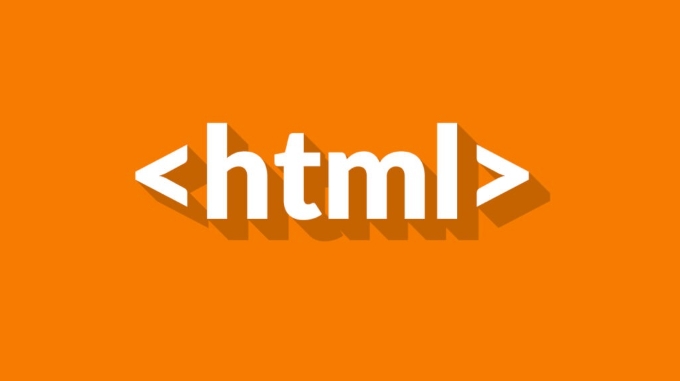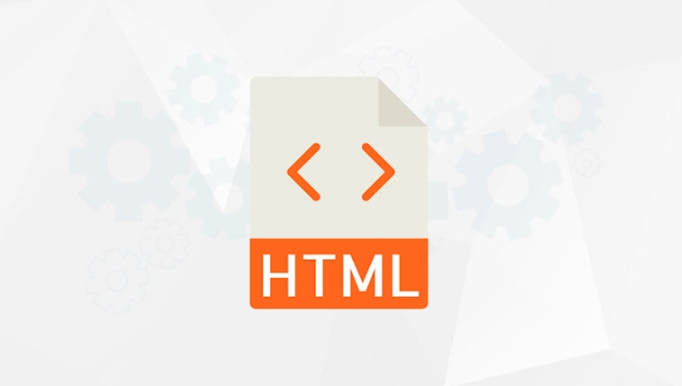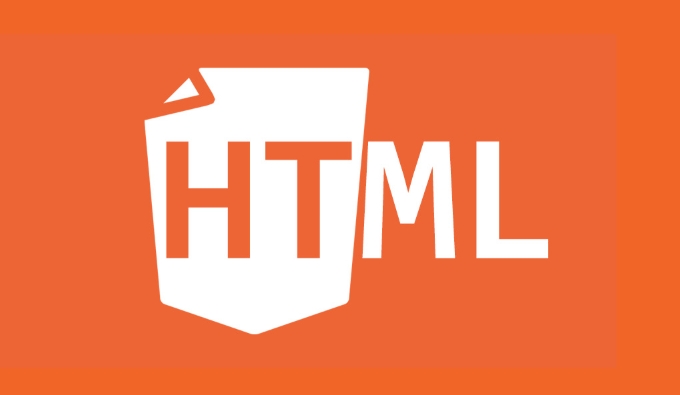 Web Front-end
Web Front-end
 HTML Tutorial
HTML Tutorial
 Why is providing alt text for images crucial for html accessibility?
Why is providing alt text for images crucial for html accessibility?
Why is providing alt text for images crucial for html accessibility?
Jul 09, 2025 am 02:29 AMAlt text is essential for web accessibility and SEO because it describes images for screen reader users and helps search engines understand image content. It ensures users with visual impairments receive the same information as sighted users, explains the purpose of images used as links or buttons, and improves navigation. To write effective alt text, be concise, descriptive, and avoid unnecessary phrases like “image of,” while leaving decorative images blank with alt="". Additionally, well-written alt text boosts SEO by improving image search visibility and page relevance without keyword stuffing.

Adding alt text to images isn’t just a small detail in HTML—it’s one of the most important practices for making web content accessible. If you're building or maintaining a website, skipping alt text means excluding users who rely on screen readers from fully understanding your content.

What Is Alt Text and Why Does It Matter?
Alt text (short for "alternative text") is a written description added to an image using the alt attribute in HTML. Its main job is to describe what an image shows, so people who can't see the image still get the same basic information.

For example:
<img src="/static/imghw/default1.png" data-src="dog-playing.jpg" class="lazy" alt="A golden retriever playing fetch in a park">
This helps screen readers convey the image's meaning to users with visual impairments. Without it, those users might miss out on context or even key information.

How Alt Text Helps Screen Reader Users
Screen readers read aloud the content of a webpage, including images. When an image has no alt text, the screen reader might skip over it entirely or announce it as “image” without any explanation—leaving the user confused.
Here’s how it helps:
- Explains the purpose of the image (like a chart, photo, or icon)
- Describes links when images are used as buttons or clickable elements
- Improves navigation, especially when pages have many images
If you use an image like a shopping cart icon to link to a checkout page, a good alt text would be:
<img src="/static/imghw/default1.png" data-src="cart-icon.png" class="lazy" alt="Why is providing alt text for images crucial for html accessibility?">
That way, users know what clicking the image does.
Writing Good Alt Text: Tips and Examples
Writing useful alt text takes some thought, but it doesn’t need to be complicated. Here are a few tips:
- Be concise: Say what the image shows in a short sentence.
- Be descriptive: Don’t just say “image of…” or “photo of…” unless needed.
-
Leave it blank if the image is decorative: Use
alt=""so screen readers skip it. - Don’t stuff keywords: That hurts accessibility and SEO too.
Examples:
- ? Good: “Group of students studying together at a library table”
- ? Not helpful: “Students”
Also, if an image contains text (like an infographic), include that text in the alt description or provide a summary nearby.
SEO Benefits Are a Nice Bonus
While the main reason for alt text is accessibility, it also helps with search engine optimization (SEO). Search engines can’t "see" images the way humans do, so they rely on alt text to understand what the image is about.
When search engines understand your images better:
- Your site may show up in image search results
- It improves overall page relevance for certain topics
- Better accessibility often aligns with better SEO practices overall
But don’t try to game the system by stuffing keywords into alt text. Google and other search engines penalize that—and real users suffer too.
So yes, adding meaningful alt text takes a little more time, but it makes a big difference in how inclusive and usable your website is. Basically, if you care about accessibility and want your content to reach everyone, alt text is a must-have.
The above is the detailed content of Why is providing alt text for images crucial for html accessibility?. For more information, please follow other related articles on the PHP Chinese website!

Hot AI Tools

Undress AI Tool
Undress images for free

Undresser.AI Undress
AI-powered app for creating realistic nude photos

AI Clothes Remover
Online AI tool for removing clothes from photos.

Clothoff.io
AI clothes remover

Video Face Swap
Swap faces in any video effortlessly with our completely free AI face swap tool!

Hot Article

Hot Tools

Notepad++7.3.1
Easy-to-use and free code editor

SublimeText3 Chinese version
Chinese version, very easy to use

Zend Studio 13.0.1
Powerful PHP integrated development environment

Dreamweaver CS6
Visual web development tools

SublimeText3 Mac version
God-level code editing software (SublimeText3)

Hot Topics
 Explain the purpose of the role attribute in ARIA.
Jun 14, 2025 am 12:35 AM
Explain the purpose of the role attribute in ARIA.
Jun 14, 2025 am 12:35 AM
ARIA's role attribute is used to define the role of web elements and improve accessibility. 1. Role attribute helps assistive technology to understand the functions of elements, such as buttons, navigation, etc. 2. Use role attributes to assign specific roles to non-semantic HTML elements. 3. The role attribute should be consistent with the element behavior and be verified by the accessibility tool test.
 HTML and Design: Creating the Visual Layout of Websites
Jun 14, 2025 am 12:39 AM
HTML and Design: Creating the Visual Layout of Websites
Jun 14, 2025 am 12:39 AM
How to create a website layout? 1. Use HTML tags to define the content structure, such as, ,. 2. Control styles and positions through CSS, using box model, float or Flexbox layout. 3. Optimize performance, reduce HTTP requests, use cache and optimize images, and ensure responsive design.
 How can you ensure your HTML code is readable and maintainable?
Jun 10, 2025 am 12:06 AM
How can you ensure your HTML code is readable and maintainable?
Jun 10, 2025 am 12:06 AM
Improve the readability and maintainability of HTML code can be achieved through the following steps: 1. Use semantic tags, such as, etc. to make the code structure clear and improve SEO effect; 2. Keep the code formatted and use consistent indentation and spaces; 3. Add appropriate comments to explain the code intention; 4. Avoid excessive nesting and simplify the structure; 5. Use external style sheets and scripts to keep the HTML concise.
 How do I stay up-to-date with the latest HTML standards and best practices?
Jun 20, 2025 am 08:33 AM
How do I stay up-to-date with the latest HTML standards and best practices?
Jun 20, 2025 am 08:33 AM
The key to keep up with HTML standards and best practices is to do it intentionally rather than follow it blindly. First, follow the summary or update logs of official sources such as WHATWG and W3C, understand new tags (such as) and attributes, and use them as references to solve difficult problems; second, subscribe to trusted web development newsletters and blogs, spend 10-15 minutes a week to browse updates, focus on actual use cases rather than just collecting articles; second, use developer tools and linters such as HTMLHint to optimize the code structure through instant feedback; finally, interact with the developer community, share experiences and learn other people's practical skills, so as to continuously improve HTML skills.
 How do I use the element to represent the main content of a document?
Jun 19, 2025 pm 11:09 PM
How do I use the element to represent the main content of a document?
Jun 19, 2025 pm 11:09 PM
The reason for using tags is to improve the semantic structure and accessibility of web pages, make it easier for screen readers and search engines to understand page content, and allow users to quickly jump to core content. Here are the key points: 1. Each page should contain only one element; 2. It should not include content that is repeated across pages (such as sidebars or footers); 3. It can be used in conjunction with ARIA properties to enhance accessibility. Usually located after and before, it is used to wrap unique page content, such as articles, forms or product details, and should be avoided in, or in; to improve accessibility, aria-labeledby or aria-label can be used to clearly identify parts.
 How do I create a basic HTML document?
Jun 19, 2025 pm 11:01 PM
How do I create a basic HTML document?
Jun 19, 2025 pm 11:01 PM
To create a basic HTML document, you first need to understand its basic structure and write code in a standard format. 1. Use the declaration document type at the beginning; 2. Use the tag to wrap the entire content; 3. Include and two main parts in it, which are used to store metadata such as titles, style sheet links, etc., and include user-visible content such as titles, paragraphs, pictures and links; 4. Save the file in .html format and open the viewing effect in the browser; 5. Then you can gradually add more elements to enrich the page content. Follow these steps to quickly build a basic web page.
 What is an HTML tag?
Jun 13, 2025 am 12:36 AM
What is an HTML tag?
Jun 13, 2025 am 12:36 AM
HTMLtagsareessentialforstructuringwebpages.Theydefinecontentandlayoutusinganglebrackets,ofteninpairslikeand,withsomebeingself-closinglike.HTMLtagsarecrucialforcreatingstructured,accessible,andSEO-friendlywebpages.
 How do I create checkboxes in HTML using the element?
Jun 19, 2025 pm 11:41 PM
How do I create checkboxes in HTML using the element?
Jun 19, 2025 pm 11:41 PM
To create an HTML checkbox, use the type attribute to set the element of the checkbox. 1. The basic structure includes id, name and label tags to ensure that clicking text can switch options; 2. Multiple related check boxes should use the same name but different values, and wrap them with fieldset to improve accessibility; 3. Hide native controls when customizing styles and use CSS to design alternative elements while maintaining the complete functions; 4. Ensure availability, pair labels, support keyboard navigation, and avoid relying on only visual prompts. The above steps can help developers correctly implement checkbox components that have both functional and aesthetics.





